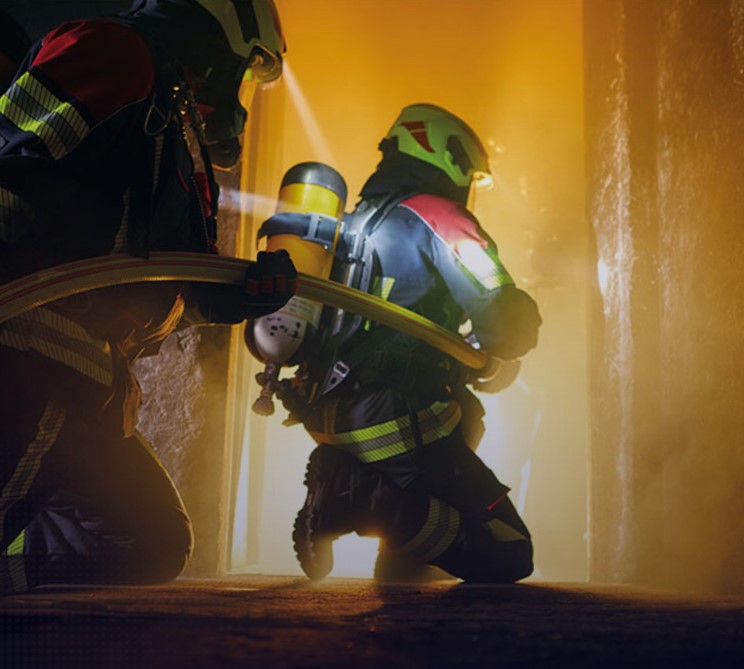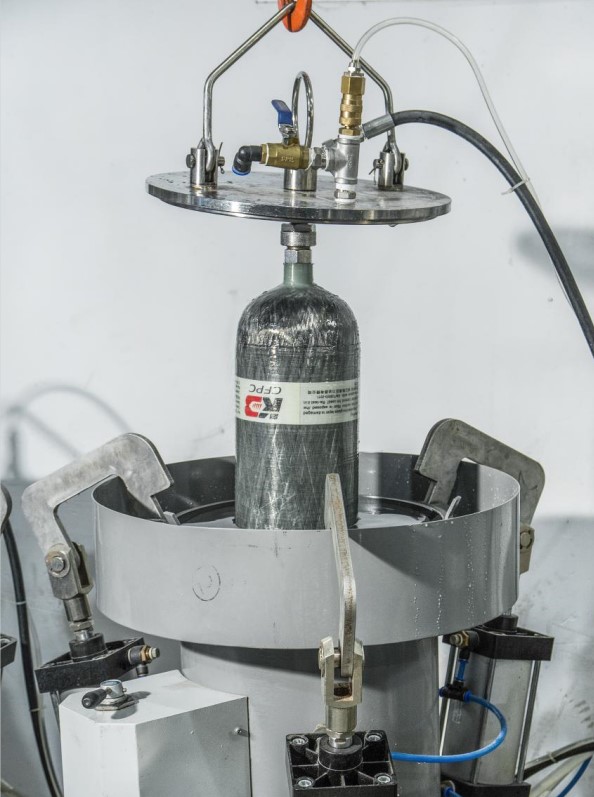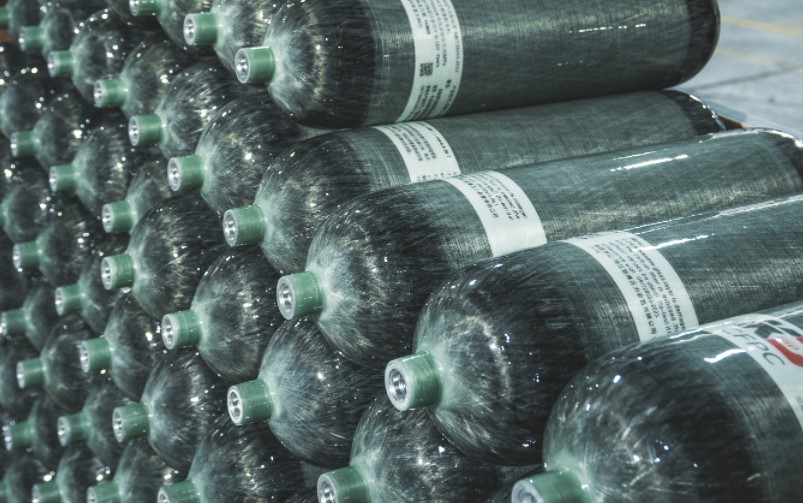Carbon fiber composite cylinders are widely used in industries like firefighting, SCUBA diving, aerospace, and industrial gas storage. They are favored for their lightweight design and high strength compared to traditional metal cylinders. Understanding key pressure ratings—working pressure, test pressure, and burst pressure—is essential for ensuring their safe and effective use. This article explains these pressure concepts and the processes involved in producing and testing carbon fiber cylinders.
1. Working Pressure: The Operating Limit
Working pressure refers to the maximum pressure a carbon fiber cylinder is designed to handle safely during regular use. This is the pressure at which the cylinder is filled and used without risk of structural failure.
Most carbon fiber cylinders have a working pressure range between 3000 psi (207 bar) and 4500 psi (310 bar), though some specialized cylinders may have even higher ratings.
A cylinder’s working pressure is determined by factors like material strength, thickness of the composite layers, and the intended application. For example, cylinders used in SCBA (self-contained breathing apparatus) for firefighters often have a working pressure of 4500 psi (310 bar) to provide extended air supply during emergencies.
To ensure safety, users should never exceed the rated working pressure during refilling or use. Over-pressurization can reduce the lifespan of the cylinder or lead to catastrophic failure.
2. Test Pressure: Verifying Structural Integrity
Test pressure is the pressure at which a cylinder is tested during manufacturing or periodic inspections to verify its structural integrity. This is typically 1.5 to 1.67 times the working pressure.
For example:
- A cylinder with a 4500 psi (310 bar) working pressure is often tested at 6750 psi (465 bar) to 7500 psi (517 bar).
- A cylinder with a 3000 psi (207 bar) working pressure might be tested at 4500 psi (310 bar) to 5000 psi (345 bar).
The hydrostatic test is the most common method for testing cylinders. This involves filling the cylinder with water and pressurizing it to the test pressure. The expansion of the cylinder is measured to ensure it remains within acceptable limits. If the cylinder expands beyond specifications, it is considered unsafe and must be retired from service.
Regular testing is required by industry standards. In most cases, carbon fiber cylinders must undergo hydrostatic testing every 3 to 5 years, depending on the regulatory requirements in a particular region.
3. Burst Pressure: The Safety Margin
Burst pressure is the pressure at which a cylinder will fail and rupture. This pressure is usually 2.5 to 3 times the working pressure, providing a significant safety margin.
For example:
- A 4500 psi (310 bar) cylinder typically has a burst pressure of 11,000 psi (758 bar) to 13,500 psi (930 bar).
- A 3000 psi (207 bar) cylinder may have a burst pressure of 7500 psi (517 bar) to 9000 psi (620 bar).
Manufacturers design cylinders with this high burst pressure to ensure that they can withstand accidental over-pressurization or extreme conditions without immediate failure.
4. Manufacturing Process of Carbon Fiber Cylinders
The production of carbon fiber cylinders involves multiple steps to ensure high strength and durability:
- Liner Formation – The inner liner, usually made of aluminum or plastic, is shaped and prepared as the base structure.
- Carbon Fiber Wrapping – High-strength carbon fiber strands are impregnated with resin and tightly wound around the liner in multiple layers to provide reinforcement.
- Curing Process – The wrapped cylinder is cured in an oven to harden the resin, bonding the fibers together for maximum strength.
- Machining & Finishing – The cylinder undergoes precision machining to add valve threads and finishing processes like surface coating.
- Hydrostatic Testing – Each cylinder is filled with water and pressurized to test pressure to ensure structural integrity.
- Leak and Ultrasonic Testing – Additional tests, such as ultrasonic scanning and gas leak detection, are performed for quality control.
- Certification & Stamping – Once a cylinder passes all tests, it receives certification markings indicating its working pressure, test pressure, and manufacturing date.
5. Testing and Safety Standards
Carbon fiber cylinders must comply with industry safety standards, including:
- DOT (Department of Transportation, USA)
- TC (Transport Canada)
- EN (European Norms)
- ISO (International Organization for Standardization)
- GB (China National Standards)
Each regulatory body has specific requirements for testing and retesting intervals to ensure ongoing safety.
Conclusion
Understanding working pressure, test pressure, and burst pressure is crucial when using carbon fiber cylinders. These pressure ratings ensure the safe operation of cylinders across various applications. Proper manufacturing and testing processes guarantee that these cylinders remain reliable under high-pressure conditions.
Users should always follow manufacturer guidelines, adhere to retesting schedules, and handle cylinders with care to maximize their lifespan and ensure safety in daily operations. By maintaining these best practices, carbon fiber cylinders will continue to provide lightweight and high-strength solutions for industries that rely on compressed gas storage.
Post time: Feb-10-2025



